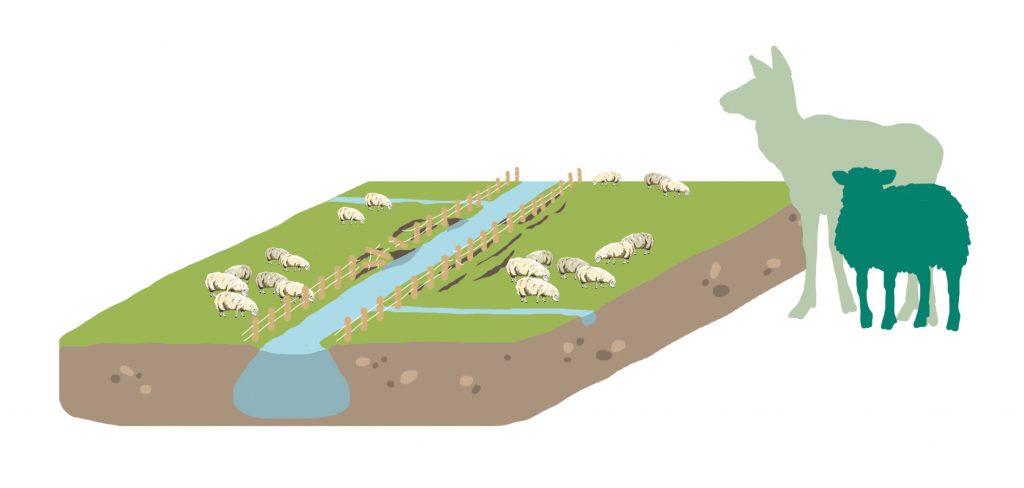Reducing riverside grazing enables trampled soils and overgrazed vegetation to recover.
Overgrazing on riverbanks damages sensitive freshwater ecosystems. This is caused by high numbers of deer, whose natural predators (e.g. wolves, lynx) are extinct in Scotland. In some places overgrazing is exacerbated by livestock, such as sheep and cattle, grazing close to riverbanks.
How does it work?
Livestock can be excluded from the riparian zone by moving fences back from the water’s edge to allow a wide, ungrazed margin. Water for the animals can be provided by troughs instead.
Deer can be excluded by deer fences, but these are very expensive, and push deer into other areas instead. Culling may be a more effective option, and can be delivered through stalking partnerships or deer management groups.
Before restoration
This river bank is heavily grazed by sheep and deer.

- Fencing along the bank allows livestock to graze right up to the water’s edge. This prevents any trees or tall, complex vegetation from growing next to the river.
- Trampling compacts soil, reducing the ability of rainwater to soak into the ground. Instead, surface run-off flows into the river, exacerbating flooding, and washing agricultural pollutants into the water.
- ‘Poaching’ (excessive trampling by sharp hooves) breaks up the ground and exposes bare soil. Eroded soil is washed into the river where it damages water quality and smothers spawning gravel for fish.
After restoration
The river bank has been released from grazing by moving the fence back from the river and managing the deer population.

- Trees and tall vegetation are able to grow, creating wildlife habitat and forming a buffer zone that absorbs run-off and pollutants from the adjacent farmland.
- Poaching has stopped and vegetation roots have stabilised the banks, preventing erosion of sediments into the river.
- With lower footfall, compacted soil is recovering and is broken up by new roots, becoming more porous and able to absorb rainwater. This helps to reduce and slow peak flows during heavy rainfall.
CASE STUDY: In 2013, livestock were fenced out from a buffer strip along the River Esk in North Yorkshire. The heavily eroded bank quickly stabilised, with grass covering the bare soil and planted willow whips establishing a strong root system to further consolidate the bank.

